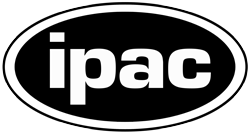Euclid is a European Space Agency (ESA) M-class mission to study the geometry and nature of the dark Universe. The mission is the second medium-class mission (M2) in the Cosmic Vision program (2015-2025). Euclid was adopted by ESA's Science Program Committee (SPC) in June 2012, and launched on July 1, 2023.
In January 2013 NASA joined the mission. NASA has contributed 16 state-of-the-art infrared detectors and four spare detectors for one of two science instruments planned for Euclid. In addition, NASA nominated three U.S. science teams for the Euclid Consortium. The Euclid Consortium is an international body of more than 2600 members as of 2023, of which more than 1000 are scientists.
The Euclid mission has been optimized for the measurement of two primary probes sensitive to Dark Energy:
- Weak Gravitational Lensing
- Galaxy Clustering, including both Baryonic Acoustic Oscillations and Redshift Space Distortions
Euclid data will enable additional constraints on Dark Energy (e.g., using galaxy clusters), and precise measurement of the initial conditions in the early Universe. Euclid data will find broad use across a wide range of ancillary science applications.
Euclid consists of a 1.2m space telescope with two instruments: VIS, an optical camera for photometry, and NISP, a near infrared (NIR) camera that does double duty as a photometer and a spectrometer. VIS takes advantage of the high resolution afforded by a space telescope to make very accurate measurements of galaxy shapes. NISP makes good use of the very low background in space to make precise measurements of the NIR fluxes of galaxies and to accurately measure the redshifts (or distances) to many millions of galaxies.
A full description of the Euclid mission is available in the Euclid definition study report (the "Red Book"). The Euclid Consortium is tasked with delivering the VIS and NISP instruments to ESA, developing and implementing the Science Ground Segment to analyze Euclid data, and performing the science analysis enabled by Euclid.
NASA has established the Euclid NASA Science Center at IPAC (ENSCI) in order to support US-based investigations using Euclid data. ENSCI participates in the Euclid Consortium’s Science Ground Segment, providing algorithm and software development, participating in data quality assurance, and performing data processing. In addition, ENSCI supports the US research community by providing expert insight into the Euclid surveys, data processes, calibration, and products.
Resources to learn more:
